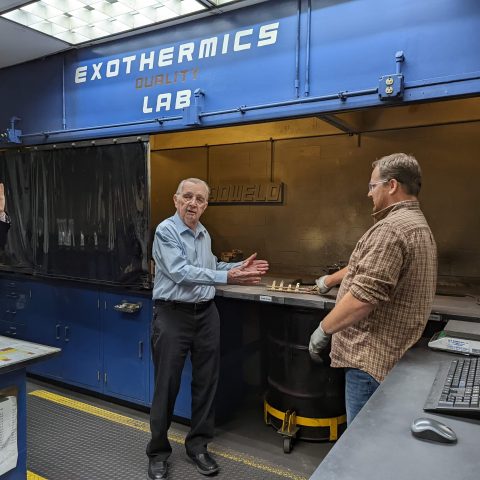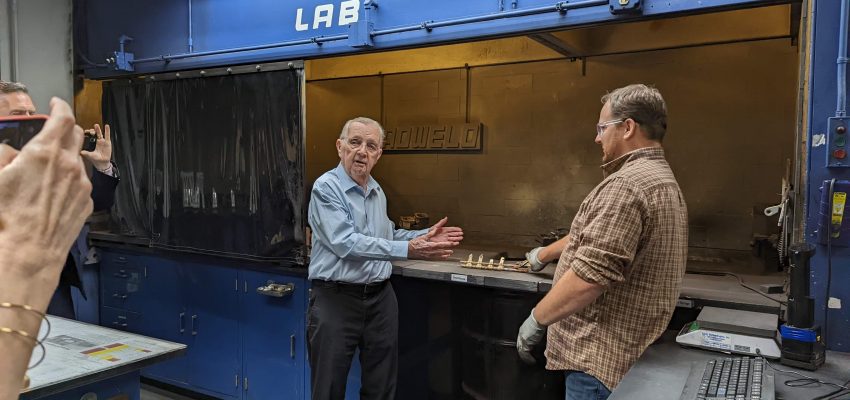In 1938, rapid scientific discovery, mass production, industrialization and technological advancements were changing the shape of the U.S. Cities were growing, and with them, the need for efficient, reliable infrastructure.
Electrified street railways – trolleys – were becoming more and more popular. Every city with more than 50,000 people had a trolley system, and hundreds of additional systems ran between cities. To carry electrical current down trolley tracks, individual pieces of steel rail had to be joined with a cable to create a continuous current. Welding was the most reliable way to do this, but it was also the most difficult, requiring heavy equipment, skilled crews and an outside power source.
Physics professor Charles Cadwell developed a better way to make these connections. Using a reaction of copper oxide and aluminum, Cadwell created the Cadweld exothermically welded connection for the Electric Railway Improvement Company—now nVent ERICO. This easy and portable solution created a bond that conducted electricity well. The Cadweld solution is still used today.
Recently, Thomas Cadwell, Charles’ grandson who accompanied him for many experiments as he was developing his Cadweld solution, and several family members visited the nVent facility in Solon, Ohio, where we produce the Cadweld products today. nVent team members listened to Thomas’ memories of professor Cadwell and shared with the family what their grandfather’s invention means to nVent. Cadwell’s visit included a tour of the facility to see the Cadweld manufacturing process and a hands-on demonstration of the Cadweld Plus product line, the first major change to Professor Cadwell’s own original design.
To honor Professor Cadwell and the entire Cadwell family, we presented Tom with a custom plaque showcasing the original patent for Cadweld, which was designed by the ERICO team and produced in an employee’s home woodshop. We were thrilled to host the Cadwell family and to share stories of Cadwell’s legacy and our plans for the future.


